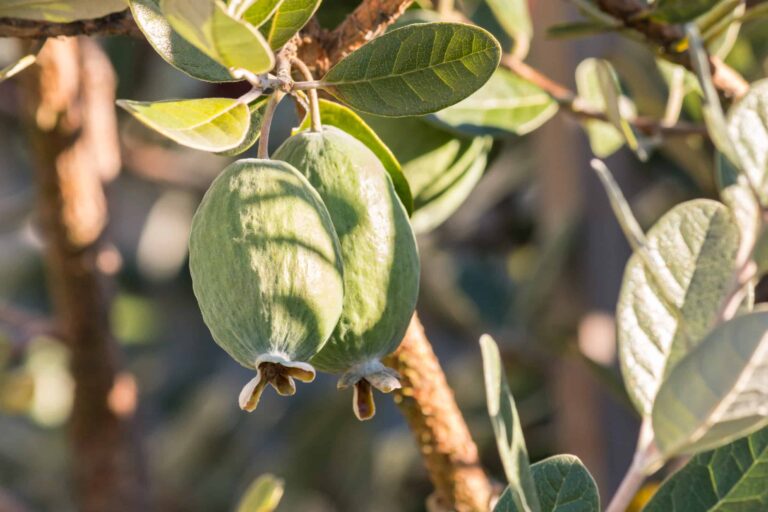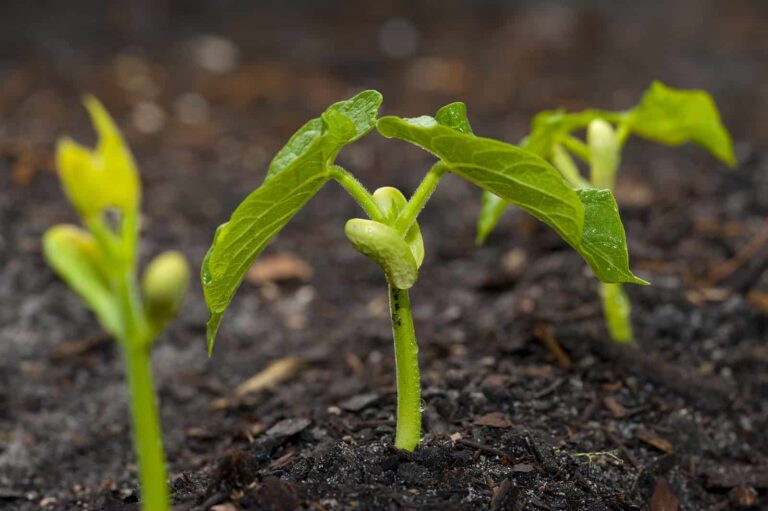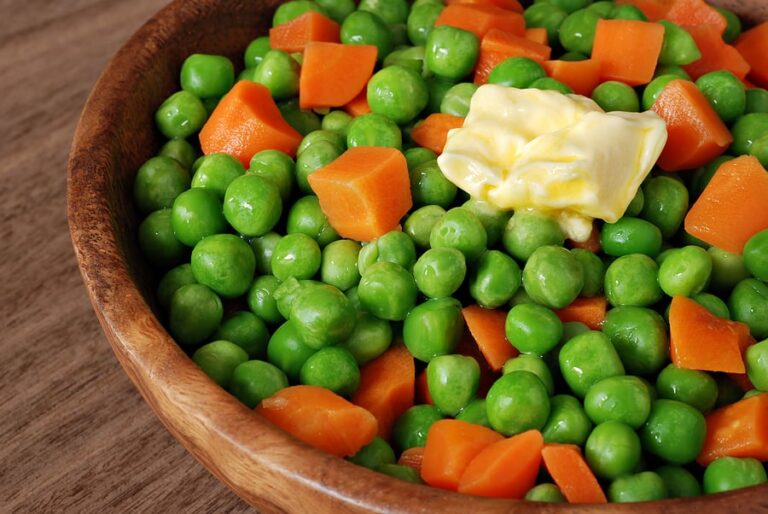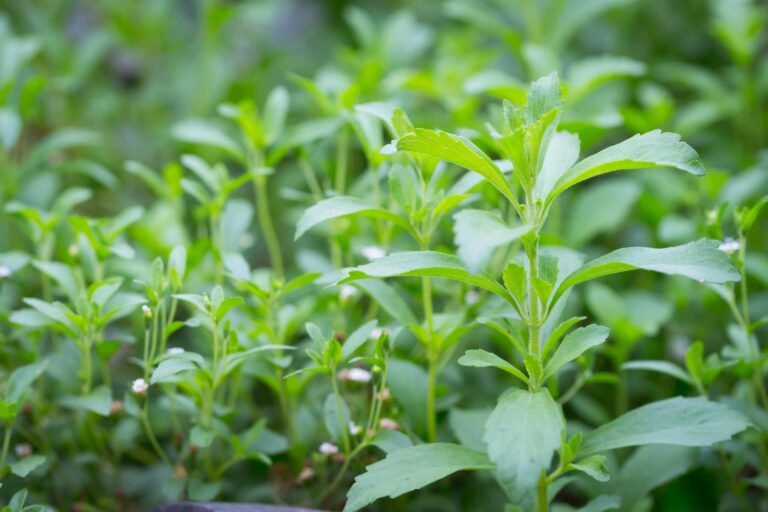How to Grow Soybeans
Soybeans are bushy, free-branching, warm-weather annuals. There are more than 10,000 soybean cultivars. Seeds can be smaller than a pea or as large as a kidney bean.
Soybeans grow 12 to 36 inches (30-91cm) tall. Stems and leaves are hairy. The flowers are white with lavender shading. Pods grow 1 to 4 inches (2.5-10cm) long in clusters of three to five. Each fuzzy pod contains 2 to 4 seeds. Seeds range from black to gray, brown, green, yellow, white, and striped.
Growing soybeans is not difficult. If you pay attention to the soil, sun, and temperature, you can grow soybeans.
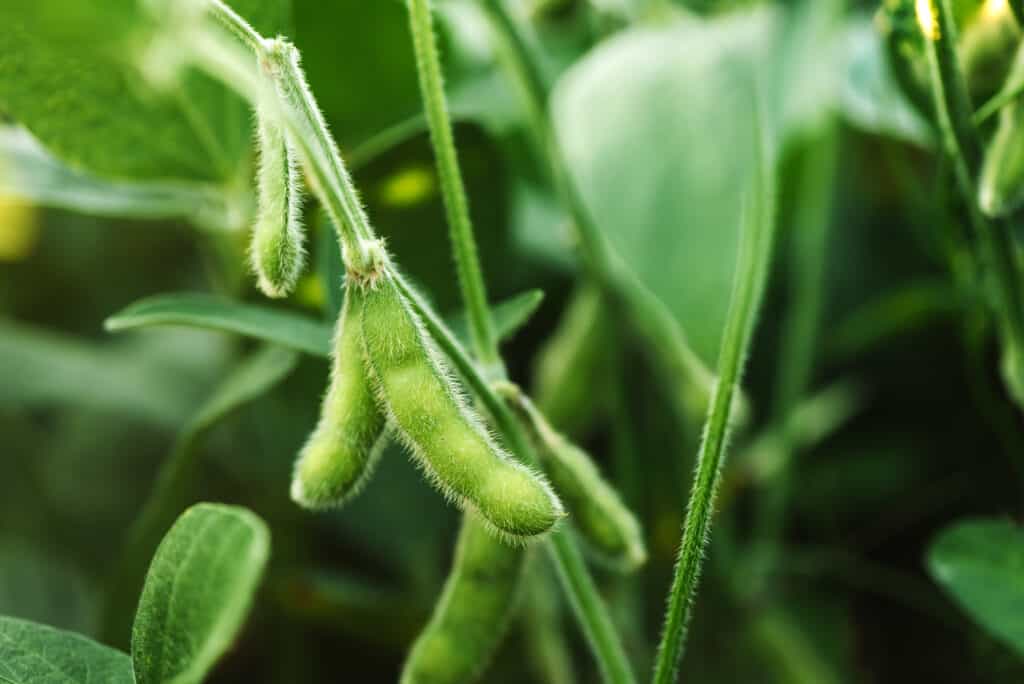
The vegetable soybean (not the field soybean) can be used like green peas or lima beans or can be dried and used like navy beans or can be sprouted like Mung beans. Soybeans are the lowest-starch, highest-protein beans.
The soybean is a sprawling bush legume much like a bush snap bean or lima bean. Plants grow 25-60 inches/70-150 cm tall.
Plant a soybean variety recommended for your growing region. A number of varieties have been developed to adapt to certain types of climates. Check with the cooperative extension or agriculture station closest to you for recommended varieties.

Here is your complete guide to growing soybeans.
Soybean growing quick tips
- Sow soybeans in spring 2 to 3 weeks after the average last frost date when the soil has warmed to at least 60°F (16°C).
- Soybeans can be planted earlier in warm-winter regions.
- Soybeans grow best where the daytime temperature averages in the 70°sF (21°C).
- Soybean yield: grow 4 to 8 soybean plants per household member.
Temperature to grow soybeans
- Soybeans require heat to produce well. (The soybean is native to tropical Asia.) There are varieties bred to grow in temperate zones, but not in cold regions.
- Soybean growth is optimal at temperatures between 68° and 77°F/20°C and 25°C. Temperatures between 53° to 68°F/12°C to 20°C are sufficient but germination, flowering, and pod development will be delayed. Temperatures greater than 86°F/30°C may hinder growth.
- For the best yield, choose a variety with the greatest number of days to maturity before the first killing frost.
- Warm weather and warm soil are required for the best yield. The soybean plant must make nearly all of its growth before it begins to bloom (blooming comes between 80 and 150 days after germination depending upon variety). Once the plant begins blooming and making seed pods, the plant stops growing up and out. Small plants at bloom time will not be large enough to yield well. (Optimal pod production per plant is about 50 pods—each with 2 or 3 oval-shaped beans.)
- Soybeans are sensitive to cold. Plant soybeans two to three weeks after the average last frost date.
Where to plant soybeans
Plant soybeans in full sun—at least 8 hours of direct sun each day. If you plant soybeans in partial shade you will not get the best yield.
Do not plant soybeans in cool or cold soil. Pre-warm the soil by placing black plastic over the planting bed for two to three weeks before planting. The black plastic will help draw solar heat into the soil. The soil needs to be at least 65°F/18°C for soybean seed germination.
Prepare the planting bed by adding plenty of aged compost to the soil. Before your first planting turn the aged compost 12 inches (30.4 cm) into the soil. In the following seasons, you can spread two inches of compost across the growing bed after each season and allow rain or irrigation to take the compost deep into the soil.
- Soybeans prefer well-drained soil with plenty of organic matter and a pH of 6.5.
- Plant soybeans in full sun; soybeans will tolerate partial shade but the yield will be reduced.
- Soybeans grow best in loose, well-drained soil rich in organic matter.
- Soybeans prefer a soil pH of 6.0 to 6.8.
- Soybeans are tolerant of poor soil.
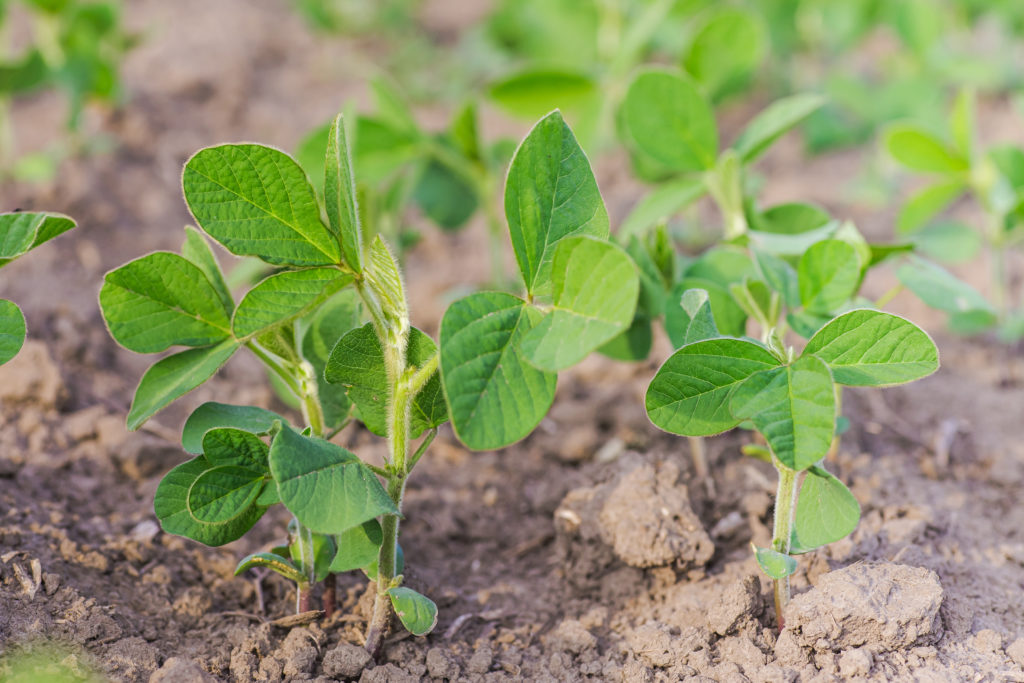
Soybean planting time
- Sow soybeans in spring 2 to 3 weeks after the average last frost date when the soil has warmed to at least 60°F (16°C).
- Soybeans grow best where the daytime temperature averages between 60°F and 70°F (16-21°C).
- Plant soybeans in late winter in warm-winter regions. Soybeans are not frost-tolerant.
Planting and spacing soybeans
Plant soybean seeds 1 inch deep (2.5 cm), 1 to 2 inches (2.5-5 cm) apart in rows 24 to 30 inches (61-76 cm) apart—not less than 12 inches (30.4 cm) apart. When the seedlings are 4 inches (10 cm) tall thin the plants from 2 to 4 inches (5-10 cm) apart. Cut the seedlings with scissors at ground level being careful not to disturb the roots of the seedlings left to grow on. Soybean plants can grow close together for support.
Do not soak seeds in water before sowing; too much moisture can cause soybean seeds to crack resulting in poor germination.
Some soybean growers treat seeds before planting with a nitrogen-fixing bacteria inoculant to help the plant roots convert organic nitrogen compounds into usable organic compounds. Bacteria already in the soil will multiply quickly once plants are growing, so pre-treatment of seeds is not a requirement. However, inoculation may be helpful where beans have not been grown before.
- Sow soybean seeds 1 to 2 inches (2.5-5cm) deep, 2 to 4 inches (5-1ocm) apart in rows 24 to 30 inches (61-76cm) apart.
- Thin successful seedlings from 4 to 6 inches (1015cm) apart; cutaway thinned seedlings with scissors at ground level being careful not to disturb the roots of remaining plants.
- Do not soak seed before planting and do not overwater immediately after planting; too moist seeds may crack and germinate poorly.
Soybean companion plants
- Grow soybeans with potatoes, cucumbers, corn, strawberries, celery, and summer savory.
- Do not plant soybeans with onion or garlic.
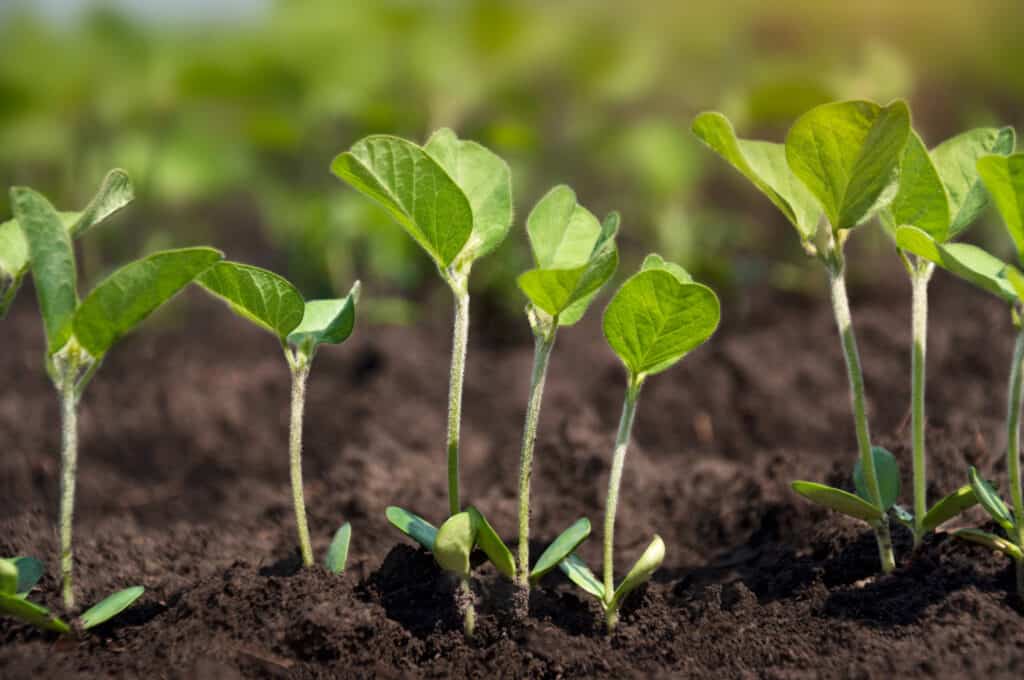
Watering soybeans
Water growing soybean plants regularly if there is no rain. Irrigate soybeans at the soil level not overhead. Overhead irrigation can cause flowers and small pods to fall off.
Do not overwater soybeans after sowing. Once seedlings are up, keep the soil just moist. Do not overwater and do not allow the soil to go dry at the surface until plants are well-rooted—at least 8 inches (20 cm) high.
When the soil temperature reaches 60°F/20.5°C, add mulch around plants to conserve moisture. Do not add mulch until the soil has warmed.
Do not handle soybeans when they are wet or covered with dew; this can spread fungus spores and disease.
- Keep planting beds evenly moist until soybeans have pushed through the soil.
- Water regularly during flowering and pod formation.
- Avoid overhead watering which can cause flowers and pods to fall off.
- Mulch when the soil warms to greater than 60°F (16°C) to conserve soil moisture.
Feeding soybeans
Add a commercial organic fertilizer to soybean planting beds. Use a 5-10-10 fertilizer following directions. Avoid fertilizers with high nitrogen; nitrogen promotes foliage growth, not bean growth. Use one pound of fertilizer for every 100 square feet.
- Add aged compost to planting beds in advance of planting.
- Side-dress soybeans with aged compost at midseason.
- Avoid adding nitrogen-rich fertilizers to planting beds. Soybeans, like other legumes, set up a mutual exchange with soil microorganisms called nitrogen-fixing bacteria to produce nitrogen compounds used by the plant.
Soybean care
Keep weeds away from soybeans but be careful not to cultivate too close to plants; soybeans have shallow roots. Hand-weed when you can and mulch with compost to keep weeds down.
- Avoid handling soybeans when they are wet or covered with heavy dew; this may spread fungus spores.
- Keep planting beds weed-free; cultivate around soybeans carefully so as not to disturb the plant’s shallow root system.
- Mulch to conserve soil moisture once the soil has warmed.
- Rotate soybeans and other legumes to add nitrogen to the soil.
Container growing soybeans
- Soybeans can be grown in containers 8 inches deep, the space required for a useable crop makes soybeans a poor choice for container growing.
Soybean pests
- Soybeans are rarely bothered by pests.
- Keep the garden clean and free of debris so that pests can not harbor or overwinter in the garden.
Soybean diseases
- Soybeans are rarely attacked by a disease.
- Rotate beans so that they do not grow in the same location more than every three years.
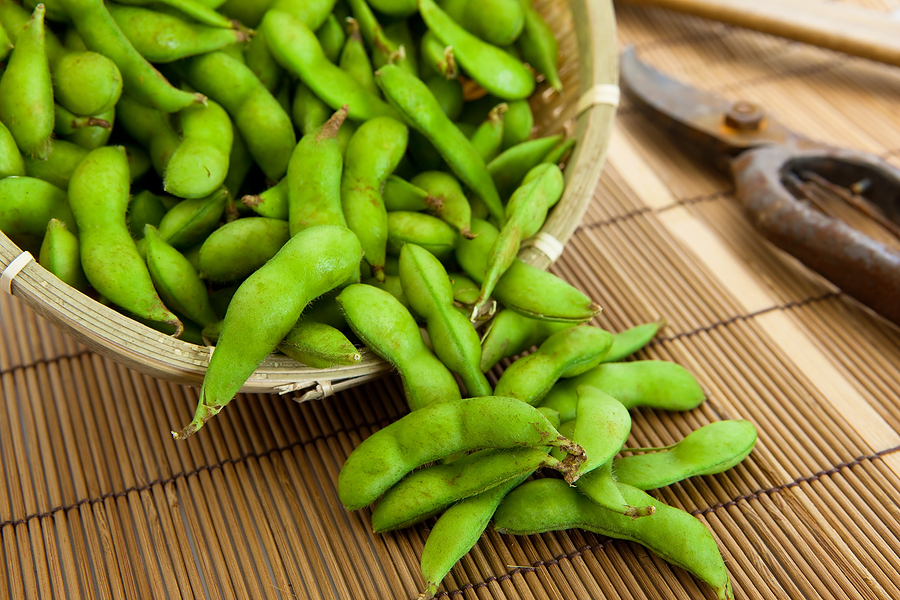
Harvesting soybeans
Harvest soybeans to be used like green beans or peas when the pods are two-thirds to fully mature but before they start to turn yellow. The harvest time for a soybean plant is about 7 to 10 days.
Soybeans are shelled—removed from their pods—by parboiling them for 5 minutes in the pods. Parboil a few at a time so that the shell is still warm when the beans are shelled—but the heat should not penetrate the seed.
Dry soybeans should be allowed to dry on the vines but should be picked while the stems are still green—otherwise, the shells will shatter and the seed will be lost.
- For green shell beans, harvest soybeans when pods are green, full, and plump, usually 2 to 3 inches (5-7cm) long, about half mature.
- Soybeans for shelling and fresh use are ready for harvest 45 to 65 days after sowing.
- Dry soybeans require 100 or more days to reach harvest.
- Soybeans reach maturity at the same time; pull the whole plant and hang it upside down to dry.
- Shell dry beans once the pods are fully dry.
Note: Soybeans should not be eaten raw; they contain trypsin inhibitor which prevents the digestion of proteins. Blanch green soybeans in boiling water for a couple of minutes and then plunge them into an ice-water bath. Boil sprouted beans for at least 5 minutes before eating.
Storing soybeans
- Green-shelled or unshelled soybeans will keep in the refrigerator for up to one week.
- Shelled soybeans can be frozen, canned, or dried.
- To make shelling easier, drop pods into boiling water for a minute.
- Dried, shelled soybeans can be stored in a cool, dry place for 10 to 12 months.
Soybean varieties
There are more than 10,000 soybean cultivars. Green-seed cultivars are considered the most tender and best flavored. Black-seeded beans are used for drying. Yellow-seed beans are used to make soy milk and flour. Select a cultivar suited to your growing region; check with the nearby agricultural extension for recommendations.
About soybeans
- Common name. Soybean
- Botanical name. Glycine max
- Origin. East Asia
Related articles:
How to Plant and Grow Snap Beans
How to Harvest and Store Snap Beans
Bean Growing Problems: Troubleshooting
Five Ways to Quick Cook and Serve Snap Beans
How to Can Green Snap Beans for Beginners
Cooking and Serving Yard-Long Beans
How to Grow Plant, Grow, and Harvest Chickpeas and Garbanzo Beans
How to Cook and Serve Chickpeas
How to Plant and Grow Lima Beans
How to Plant, Grow, and Harvest Broad Beans and Fava Beans
Five Ways to Cook and Serve Fava Beans
All About Dried Beans – Growing and Cooking
Container Growing Beans – Plant, Grow, and Harvest Tips
Garden Planning Books at Amazon:
- Vegetable Garden Almanac & Planner
- Kitchen Garden Grower’s Guide Vegetable Encyclopedia
- Tomato Grower’s Answer Book
- Vegetable Garden Grower’s Guide
More how to grow articles:
Learn how to plant, grow, and harvest your favorite vegetables. Click below for all you need to know.
- Artichoke
- Arugula
- Asparagus
- Beans, Snap
- Beets
- Broad Beans
- Broccoli
- Brussels Sprouts
- Cabbage
- Cantaloupe — Melons
- Cardoon
- Carrots
- Cauliflower
- Celeriac
- Celery
- Chard
- Chayote Squash
- Chickpeas
- Chicory
- Chinese Cabbage
- Collards
- Corn Salad
- Corn, Sweet
- Cresses
- Cucumbers
- Eggplant
- Endive and Escarole
- Fava Beans
- Florence Fennel
- Garbanzo Beans
- Garlic
- Horseradish
- Jerusalem Artichoke
- Kale
- Kohlrabi
- Leeks
- Lettuce
- Lima Beans
- Melons
- Mizuna
- Mustard Greens
- New Zealand Spinach
- Okra
- Onions
- Parsnips
- Peanuts
- Peas
- Peppers
- Potatoes
- Pumpkins
- Radicchio
- Radishes
- Rhubarb
- Rutabaga
- Salsify
- Shallots
- Sorrel
- Southern Peas
- Soybeans
- Spinach
- Squash, Summer
- Squash, Winter
- Sunchokes
- Sweet Potato
- Swiss Chard
- Taro
- Tomatillo
- Tomatoes
- Turnips
- Watermelon
- Zucchini



